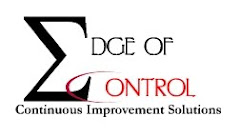While waiting to hear back about the budget, the Munleytown team decided to go ahead and launch the aseptic packaging line project. According to the messages sent from head office, especially marketing, this new line was in direct alignment with the corporate strategy for 2010 and the next 5 years. So, the risk of the project being cancelled seemed low.
To make sure the team was headed in the right direction and all together, Eva had the team work on developing a Project Charter.
A project charter basically consists of the title, a description of the issue or situation, the impact it has on the business and what the key objectives are. It outlines the scope of the problem, overall timing, key metrics and milestones and the who the key stakeholders are.
While a charter should be an evergreen document, Eva knew it was essentially a contract between her, the team members and the key stakeholders. If something changed, whether it be scope, timing, personnel or even the objectives, the charter would need to be updated, reviewed and signed off again.
The first go-round for the team produced a charter with a lot of holes. They just didn't have enough information. Who should be involved? What was the impact of the issue? When did it need to be done by? What is the right amount of stretch in setting the goals? What are potential risks to the project itself? But now the team was in agreement about what questions needed to be asked and was able to fill in the blanks during the 2nd chartering meeting.
Leaving the 2nd meeting, Eva felt good about her team and a lot more confident that they were all heading in the same direction to solve the problem.
Subscribe to:
Post Comments (Atom)





No comments:
Post a Comment